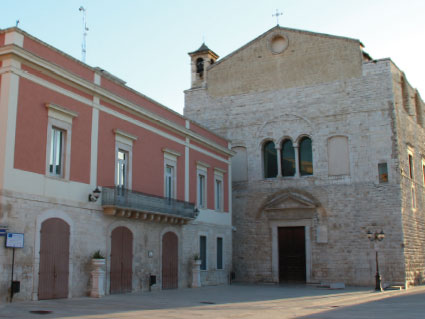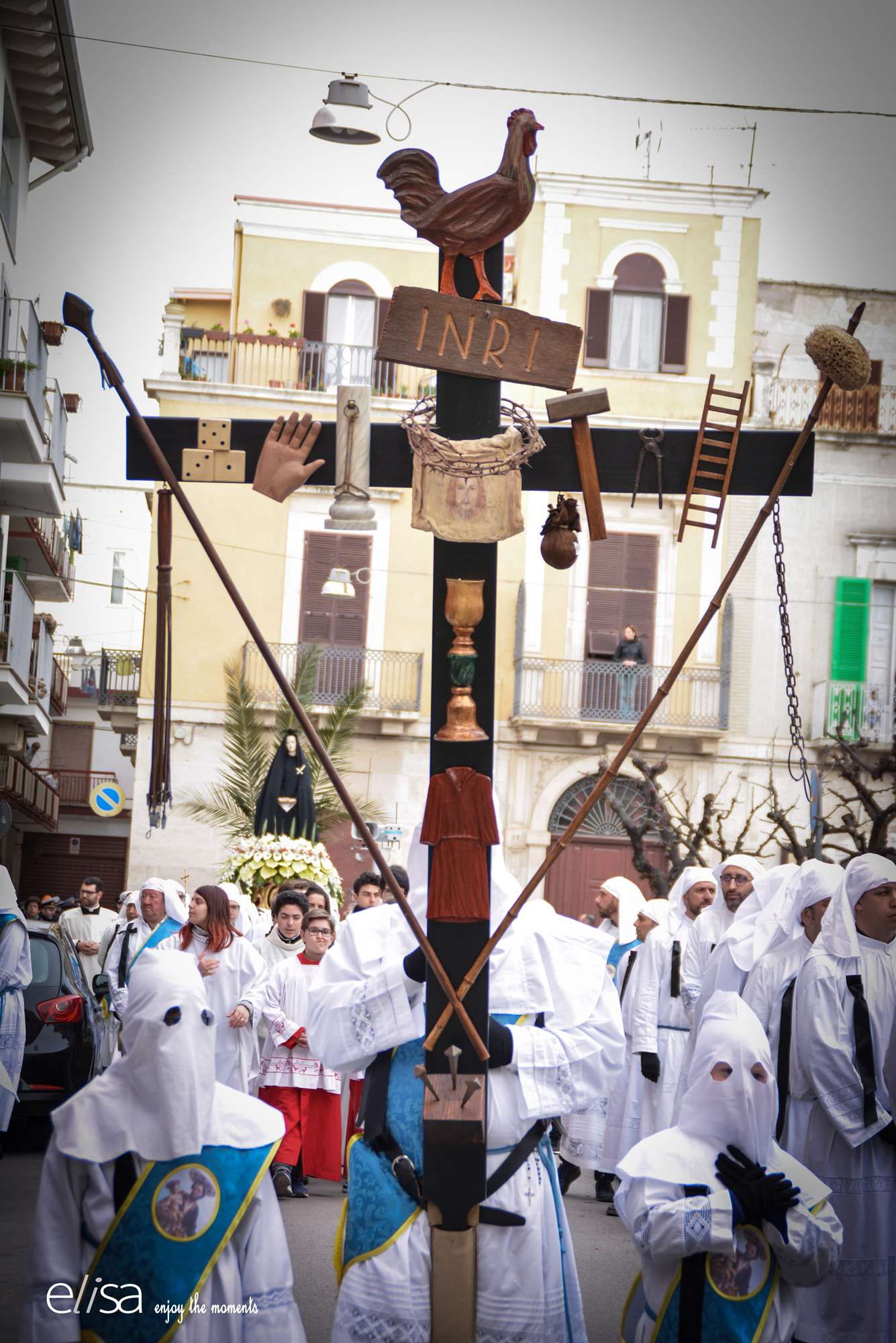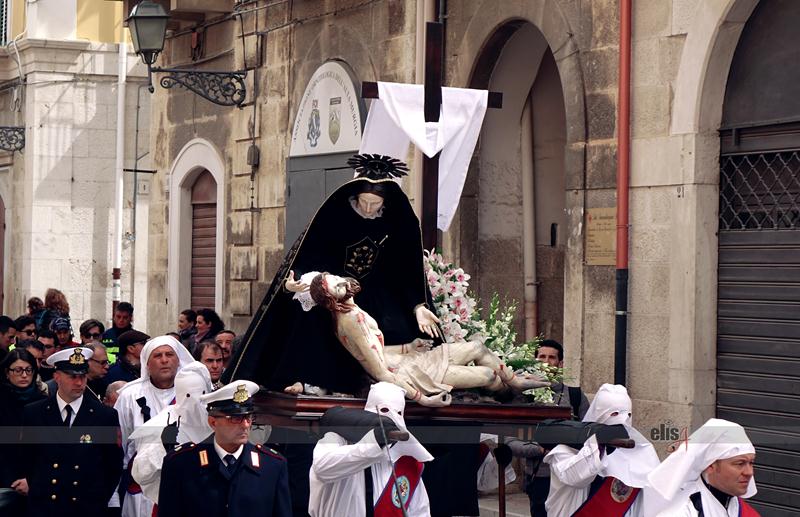





The Confraternity of St. Joseph was born on April 13th 1627 following the assent given by the Archbishop to the desire of some priests, clerics and secular nobles from Corato to establish a Congregation in honour of St. Joseph and to build a church to be dedicated to the same saint.
The church was built, with the title of St. Joseph, outside the walls of the town, specifically in the place popularly called Vaglio, and corresponds to the central nave of the present church.
The Confraternity of St. Joseph has a civil and ecclesiastical legal status under the laws of the Italian State; the civil status was obtained with R.D. No. 1391 of 06.06.1936 with the title of “Opera Pia San Giuseppe” (Charity St. Joseph).
Each year, on March 19th, the day on which the Church celebrates the Solemnity of St. Joseph, the Confraternity, led by its spiritual father, currently Gianni Cafagna, celebrates its patron saint by participating in the Eucharistic celebration in the parish church with the same name where, on this occasion, the eighteenth century statue of the Saint is exposed to the veneration of the faithful.
Every year, on the same day and during the Eucharistic celebration, two rites are held: the clothing of new members, resulting in their admission to the novitiate, and the profession of faith of the members who, instead, have finished their novitiate year.
Both rites are performed in accordance with a precise ritual indicated in the Diocesan Statute of the Confraternities.
As for the rites of popular piety, the Confraternity of St. Joseph has always organized the Good Friday processions, namely that of Holy Mary of Sorrows and the one of the Mysteries.
Finally, the Confraternity of St. Joseph, together with the Confraternity of Our Lady of Mount Carmel, has the right to carry the wooden and silvery statue of the patron saint, Saint Cataldo, and also has the right to participate, in confraternity clothes, with its Directors, to the pontifical Masses in its honour that take place, every year, on March 8th, May 10th and in August (usually the third Sunday).

BRIEF HISTORY
In 1710 Father Domenico Candido was appointed rector of the church of Santa Maria Greca; he felt the need to spread the cult of our patron "SANTA MARIA GRECA" and thought to establish a lay confraternity with the title of confraternity Santa Maria Greca. The Confraternity was born on February 8th 1712 and since its establishment it has had the obligation to keep alive the main religious services. After various events the aforementioned confraternity ceased to exist after about 162 years. On May 17th 1874, by the will of the Archbishop Giuseppe dei Bianchi Dottula, the association was restored with great solemnity, entitled Archconfraternity Santa Maria Greca, with the right to hoist its double standard in public processions. The brothers enrolled in the new association made many donations in devotion to our Patron Santa Maria Greca. The Confraternity has the obligation to support the various religious services and to finance the feasts in honour of the Madonna Greca and, in 1890, it also assumed the obligation, after a dispute with the Confraternity of St. Joseph whose reasons are unknown even today, to carry the statue of Holy Pietà on Holy Thursday. The statue was made in paper-mache and polychrome wood and has been recently restored and defined as an artwork of great value by the Superintendence of Bari. Until the early 70's, it was carried in procession on Holy Thursday, then it was carried in the early hours of Holy Saturday.
The ARCHCONFRATERNITY TODAY
The Archconfraternity of Santa Maria Greca continues, even today, to spread the cult of the Madonna Greca, whose feast is celebrated on July 18th each year, and it is committed to keep the sacred furnishings passed down from our ancestors, as they belong to our culture.